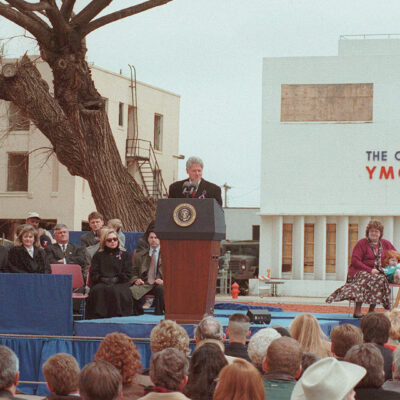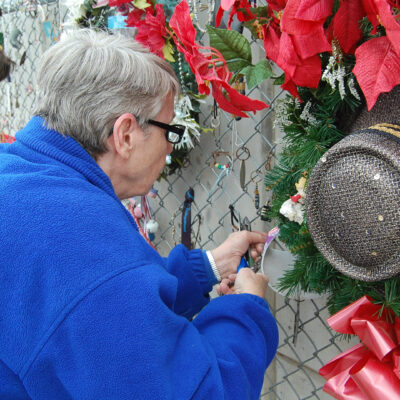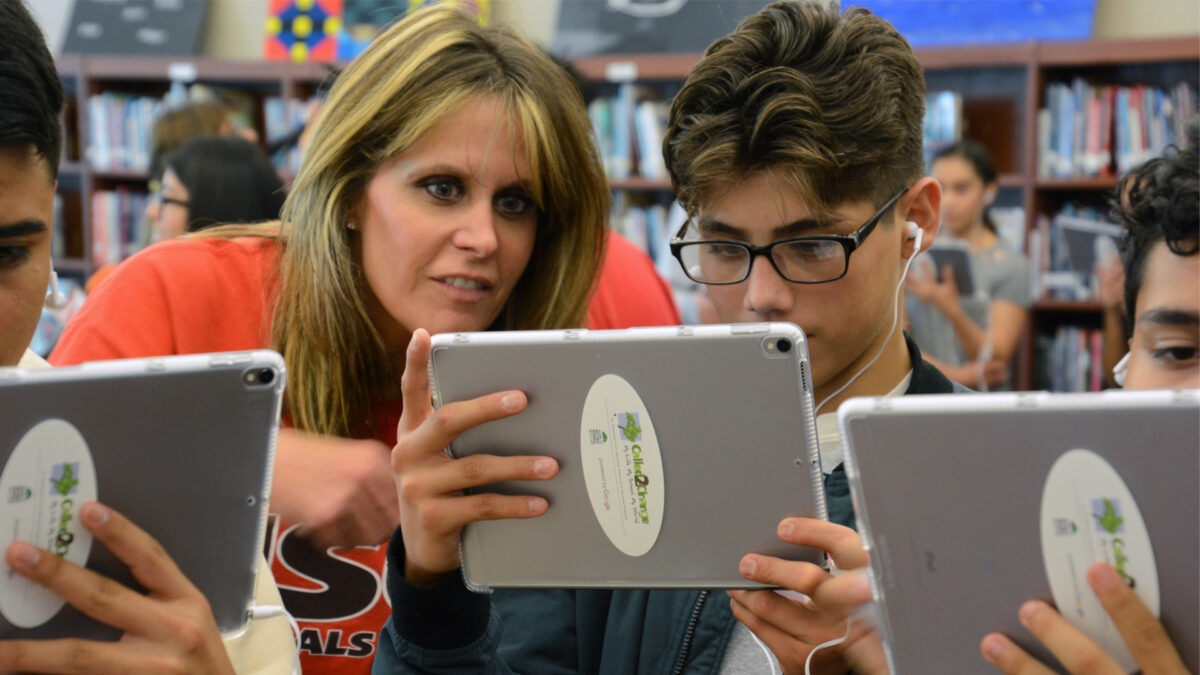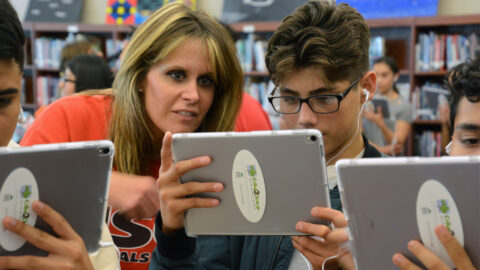Lesson Plan
Evidence: What Story Does It Tell?
Locard’s exchange principle states that, “Every time someone enters an environment, something is added and removed from it.” In other words, “Every contact leaves a trace.” Investigators operate under this assumption to help solve crimes by looking for and collecting physical evidence left behind at crime scenes. Their findings may make the difference between a guilty or not guilty verdict.
Once it was determined that the Oklahoma City bombing was not just a tragic accident, but a deliberate act of terrorism, investigators began securing the site and started collecting evidence. Investigators immediately took statements made by eyewitnesses and survivors to see if anyone saw anything suspicious prior to the bombing that could lead to the perpetrators. Tangible, or physical, evidence was also being collected to help solve this crime and bring the perpetrators to justice.

Through countless hours of meticulous work by investigators, there was enough testimonial and physical evidence to convict Timothy McVeigh and Terry Nichols for their part in the deaths of 168 innocent men, women and children. Physical evidence, such as fingerprints, dental records, and clothing was also critical in determining the identity of many victims.
Lesson Summary
Students will discuss the differences between testimonial and physical evidence and debate which kind of evidence is more reliable in solving a crime. Students will “lift” each other’s fingerprints and conduct an activity on their cell phones to see examples of each type of evidence. They will examine the testimonial and physical evidence in the trials of Timothy McVeigh and Terry Nichols.
- Essential Questions: What is the difference between testimonial and physical evidence? What are the advantages or disadvantages of each?
- Time frame: 1-2 class periods
- Subject(s): Oklahoma History, U.S. History, Science (forensics, observation)
Materials Needed
- Pencils
- Clear tape
- Index cards
- Handout: Testimonial Evidence, Physical Evidence, and FBI Statistics
- Students’ phones (optional)
- Access to YouTube
Lesson
- Introduce Locard’s exchange principle: “Every time someone enters an environment, something is added and removed from it.” Discuss this idea with the class. What has changed since students entered the room?
- Discuss the two types of evidence: testimonial (eyewitness), and physical.
- Distribute the handout or view together on a screen: Testimonial Evidence.
- Distribute the handout or view together on a screen: Physical Evidence.
- Ask, “Of the two types of evidence, which do you believe is more reliable? Why?”
- Conduct the following activity about testimonial evidence:
-
- Have a message written on a piece of paper, such as, “I saw a man with a beard and a lady with ponytails walking into the grocery store at 1 p.m. today.” Have one student speak (not type) this message into his or her phone as a text message and send to someone else within the class. The receiver of the message then has to memorize the message they received, speak it into his/her phone, and send it to someone else in the classroom. Repeat several times as a text message. (If you would rather not have them text each other, you could opt to play this game the old-fashioned way by whispering the message around the circle.)
- Sometimes the end result is drastically different from the initial message. This exercise shows how information that is not received firsthand can often be inaccurate and unreliable. The way information is obtained can be critical in proving innocence or guilt.
- Conduct the following activity about physical evidence:
-
- Fingerprint analysis is one way investigators solve crimes and can help lawyers prove whether a client is guilty or not. Every individual’s fingerprints are unique and no two are alike. Timothy McVeigh’s and Terry Nichols’ fingerprints were found on several documents, helping corroborate testimonial evidence and eventually helping prove their guilt in the bombing.
- Take a pencil and sketch a dark spot on paper. Press a finger on the spot and smear until the finger is dark. Take a piece of clear tape and stick it onto the finger. Peel off the tape quickly and place the tape onto an index card.
- Look at the patterns of various students’ prints and note similarities and differences and if any have distinguishing features.
- Show video about awareness. Sometimes eyewitness and victim statements can be unreliable due to stress, differing perceptions, lack of awareness, personal biases, and a variety of other reasons. The following video shows that perception is not always reality. Discuss the consequences of inaccurate eyewitness testimony.
- Summary: Review/discuss the OKBOMB FBI Statistics sheet.
- Assessment: Create a Venn diagram comparing and contrasting the two types of evidence.
Oklahoma Academic Standards for Social Studies; Oklahoma History Content Standard 5:10; grades 9-12:
Cite specific textual and visual evidence to analyze the causes and effects of the domestic terrorist attack on the Murrah Federal Building in Oklahoma City, including the responses of Oklahomans to the event, the concept of the Oklahoma Standard and the creation of the Oklahoma City National Memorial & Museum.
Oklahoma Academic Standards for Social Studies; High School U.S. History; The United States: The American Nation in Transformation, 1878 to the Present Content Standard 6:6; grades 9-12:
The student will analyze the foreign and domestic policies in the contemporary era, 1977 to the present; Evaluate the rise of terrorism and its impact on the United States including the 1995 bombing of the Murrah Federal Building, the first attack on the World Trade Center Towers in 1993, the attacks on September 11, 2001, the PATRIOT ACT, and the creation of the Department of Homeland Security.
Oklahoma Academic Standards for Science; HS-LS3-1 Heredity: Inheritance and Variation of Traits; grades 9-12:
HS-LS3-1.3: Planning and carrying out investigations
HS-LS3-1.7: Engaging in argument from evidence
HS-LS3-1.8: Obtaining, evaluating, and communicating information
National Science Education Standards; Content Standard A; grades 5-12:
As a result of activities in grades 5-12, all students should develop a) abilities necessary to do scientific inquiry and b) understandings about scientific inquiry.
National Council for the Social Studies 10.a; grades 6-12:Social studies programs should include experiences that provide for the study of the ideals, principles, and practices of citizenship in a democratic republic, so that the learner can identify key ideals of the United States’ democratic republican form of government, such as individual human dignity, liberty justice, equality, and the rule of law, and discuss their application in specific situations.





